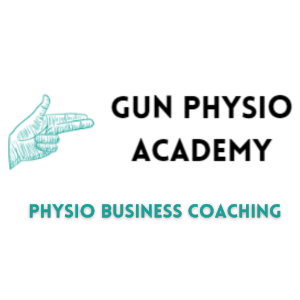In this blog post I’ll be sharing my insights on the Cynefin framework. First off, I will be explaining what it is, how it works, and why it has been so valuable for me. I like using this concept for it’s inherent simplicity. It purposefully requires me to step back from any decision and first ask myself, how do I define the problem in front of me?
Whether you’re a business leader, a healthcare professional, or simply someone interested in looking to improve your problem solving skills, I would encourage you to read on as we look to unlock some real value today.

What is the Cynefin framework?
The word Cynefin (pronounced kuh-nev-in) is of Welsh origin and represents the complex and interconnected factors within our environment and experiences that shape our thoughts, perceptions, and actions in ways that may never be fully understood.
This concept was first discussed in the late 90’s and written about extensively in a 2007 HBR article. The framework helps leaders make better decisions by categorising problems into 5 distinct domains. By doing so, leaders are able to understand their unique contexts and respond accordingly, without wasting energy on overthinking routine problems or trying to force complex problems into standard solutions.
The most valuable thing I’ve learned in the last few years was using this framework. Naturally, when times were tough in 2020 there was a lot of action without a lot of thought, it was chaos and this is how one would learn to survive in a constantly changing environment. Twenty-twenty one brought with it a mix of chaos and complexity. We weren’t out of the woods but decision making was now possible and emerging patterns had started to form.
This complex environment is very much where we remain and navigating this requires a specific skillset.
Understanding the five domains of the Cynefin framework
The 5 domains are best represented in the table below:
| Domain | Relationship between cause and effect | Approach |
| Simple | Clear and well-understood | Apply a standard solution |
| Complicated | Less clear; requires analysis and expertise | Consult with experts |
| Complex | Only clear in hindsight; involves multiple factors | Experiment with small interventions and learn from feedback |
| Chaos | Unclear and unstable | Take decisive action to stabilise the situation and then transition to a different domain |
| Disorder | No clear understanding | Assess the situation to determine which domain it belongs to |
The benefits of using the Cynefin framework for decision-making
The biggest benefit I have found is that I can be far more efficient with my time.
One of the key aspects of leading others is letting other people make decisions. Within the context of this framework, I can oversee decisions from my team members without having to necessarily involve myself. For example, a receptionist easily manages a simple problem, such as a client wishing to reschedule an appointment.
A physiotherapist being absent presents a slightly more complicated problem. The receptionist may have to reschedule some clients, switch others to different practitioners and make alterations to Pilates class times. With a sense-analyse-respond approach, they can likely figure out from their conversations how to resolve this. However, often some training beforehand in what to do under these circumstances can be very valuable.
The other domains however do require a bit more executive thinking. Working as a physiotherapist, particularly after my post-graduate training, the concept of complex problems became quite familiar. Often the more challenging clinical scenarios do not immediately have a “correct” answer, ie. diagnosis. Often we need to use treatment direction tests; these tests act as small experiments that help us to unearth new information. From which, we can then make a more formulated plan. This is the probe-analyse-respond method.
Identifying the correct domain is paramount when dealing with chaos or disorder. Decisive action is often the first step. Our shopping centres’ roof collapsed after a heavy storm last year, flooding our clinic and sending our team into chaos. The immediate action was an evacuation and this was a very fast decision making process. Act-analyse-respond. Meaning get out of there, then figure out what to do from outside. True chaos doesn’t come about as often as we might think. However, particularly as a new leader, it can very often feel like it does.

Tips for effectively applying the Cynefin framework
- Understand the context: It’s crucial to have a deep understanding of the context in which your physiotherapy business operates. This includes what is unique about your own area and client demographic, your own staff and even your own leadership.
- Communicate clearly: As always, communication and how well team members understand what is happening is vital. Avoid technical jargon and focus on short explanations or diagrams. This will aid in decision making.
- Embrace complexity: As with any clinical scenario sometimes we must embrace complexity. Experiment with small interventions, learning from feedback to make informed decisions.
- Foster collaboration: Particularly when dealing with complex problems. Utilising the skills of various departments or teams can really enhance outcomes. Often encouraging diverse perspectives and expertise can lead to more nuanced and effective solutions to these problems.
- Emphasise continuous learning: The Cynefin framework is not a one-size-fits-all solution. It requires ongoing learning and adaptation to be effective in physiotherapy businesses. Prioritise continuous learning and improvement, and remain open to adjusting your approach based on feedback and new information.
Follow these tips and adapt the framework to your physiotherapy business’s unique context. This will help you navigate complexity and make better decisions in a dynamic environment.
Potential limitations and criticisms of the Cynefin framework.
Oversimplification: This framework offers a valuable sense-making tool for physiotherapy businesses. It may oversimplify complex systems and fail to capture the full range of factors that contribute to a problem. It is important to remember that the Cynefin framework serves as a starting point and needs additional analysis and insights.
Subjectivity: The interpretation of the problem and context is often subjective and can vary from person to person. In physiotherapy businesses, different practitioners or staff members might have different views on a situation. This can lead to varying interpretations of the problem itself and potential solutions.
Limited guidance: While the framework provides guidance on the most effective approach for addressing each domain, it may not offer enough specificity. For instance, it won’t tell you exactly how to respond to a negative google review. The analysis and execution components are really up to your discretion. You inevitably still make the final decision.
Over-reliance on expertise: In the complicated domain, the Cynefin framework recommends consulting with experts. However, this approach can lead to an over-reliance on expertise and limit the ability to develop innovative solutions within a physiotherapy business. Encouraging input from all team members and fostering a culture of innovation can help overcome this limitation.
By being aware of these potential limitations, physiotherapy businesses can use the Cynefin framework more effectively, taking into account its strengths and weaknesses while developing strategies to address complex challenges.
Conclusion: Why the Cynefin framework is a valuable tool for decision making
The Cynefin framework is a valuable tool for making sense of complex systems and making informed decisions in the face of uncertainty and ambiguity. While it is not a perfect framework and has its limitations, it remains a useful resource for leaders and organisations looking to improve their decision-making capabilities.
In future blogs, I will discuss the concept of embracing complexity, within the context of physiotherapy businesses and how we can best apply this framework. By applying the Cynefin framework in practice and adapting it to a physiotherapy business context, leaders can really make a positive impact and achieve better outcomes for their businesses, for their teams and best of all, for their clients.
References:
Snowden, D. J., & Boone, M. E. (2007). A leader’s framework for decision making. Harvard Business Review, 85(11), 68-76.





